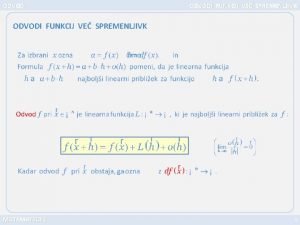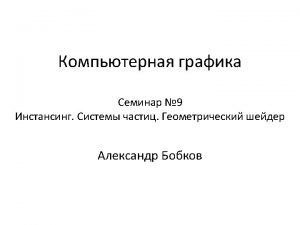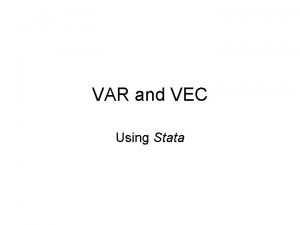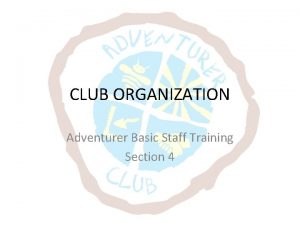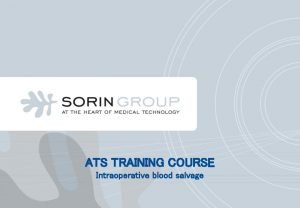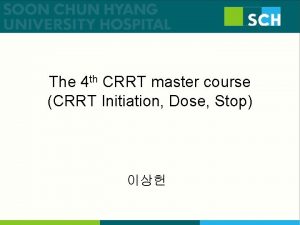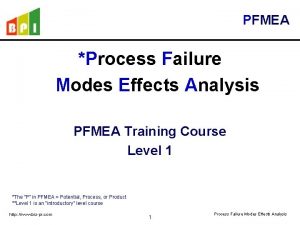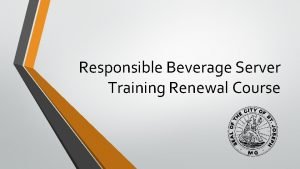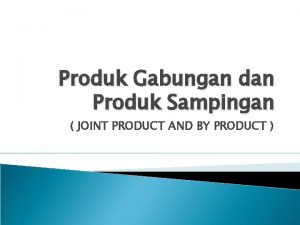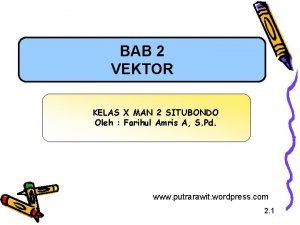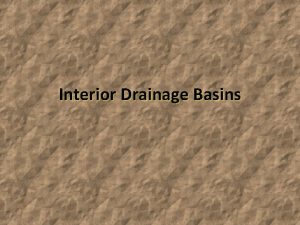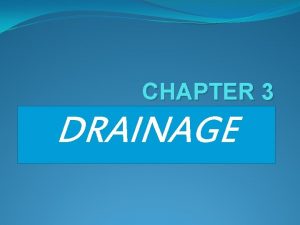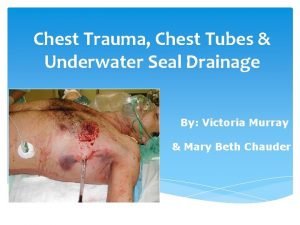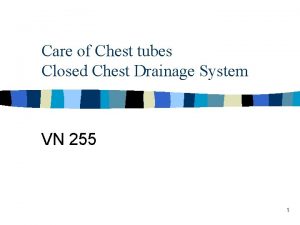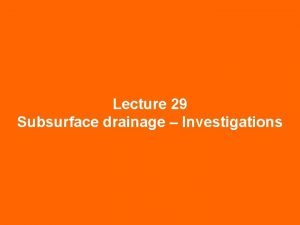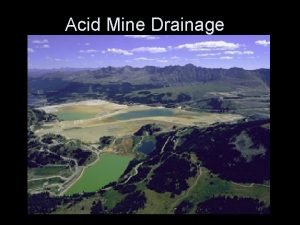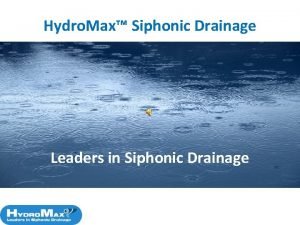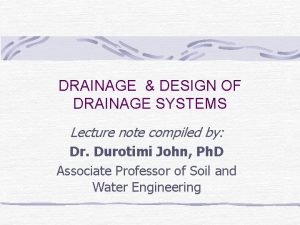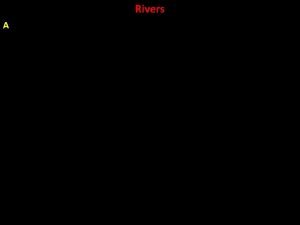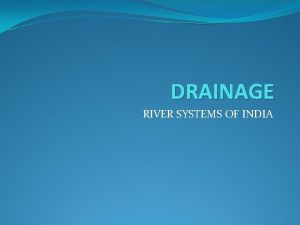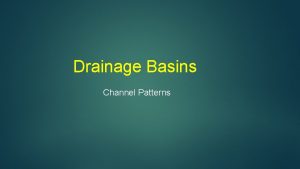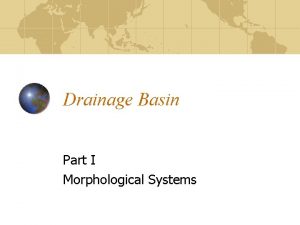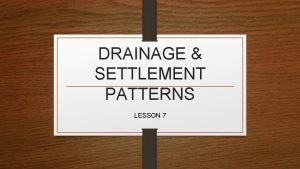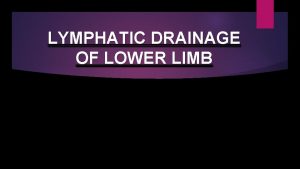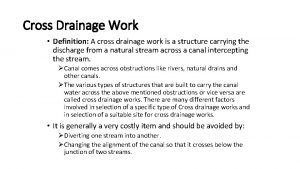CHEST DRAINAGE PRODUCT TRAINING COURSE Richard vec M
















































- Slides: 48


CHEST DRAINAGE PRODUCT TRAINING COURSE Richard Švec, M. D.

Training overview • Anatomy, physiology and mechanics of breathing • Pneumothorax, Haemothorax • Principles of underwater seal chest drainage • From the bottle system to CDU • Chest drainage products (features and benefits)

Anatomy of the Chest Cavity Trachea Left Lung Right Lung Mediastinum Diaphragm Pericardium Intrapleural space

Intrapleural Space Visceral pleura Chest wall Lung Zoom Parietal pleura Intrapleural space

Principles of Respiration The pressure of a given quantity of gas is inversely proportional to its volume.

Principles of Respiration Increasing volume causes a decrease in pressure, which causes air to rush in as the pressures reach equilibrium.

Principles of Respiration Decreasing volume causes an increase in pressure, which causes air to be expelled as pressures reach equilibrium.

The Lungs Passive organ (can not make any movements by itself) Needs to be expanded to work Expansion of the lungs is achieved by: • Negative intrapleural pressure • Lung surface tension Air inlet/outlet into/from lungs is achieved by: • Increase/Decrease of the volume of the chest cavity (Boyle´s law)

Mechanics of Respiration Inspiration process Air in Contraction of diaphragm and intercostal muscles Increase of the negative intrapleural presure Expansion of the lungs Air inlet to lungs

Mechanics of Respiration Expiration process Air out Relaxation of diaphragm and intercostal muscles Decrease of the negative intrapleural presure Relaxation of the lungs Air outlet from lungs

Abnormal Conditions • Violation of the closed system of the thoracic cavity • Loss of the negative intrapleural pressure • Accumulation of air in the intrapleural space • Accumulation of fluid in the intrapleural space ! PARTIAL OR FULL LUNG COLLAPSE DIMINISHED RESPIRATION TREATMENT NEEDED !

Terminology Pneumothorax • accumulation of air in the pleural space Haemothorax • accumulation of blood in the pleural space Haemopneumothorax • accumulation of air and blood in the pleural space Fluidothorax • accumulation of any other fluid (matter) in pleural space Haemomediastinum • accumulation of blood in mediastinum

Pneumothorax • External pneumothorax Opening in the chest wall. Air directly enters and leaves the intrapleural space - open communication. Loss of negative intrapleural pressure. 0 • Internal pneumothorax Opening in the lung. Air enters and leaves intrapleural space through lung. Loss of negative intrapleural pressure. 0 • Tension pneumothorax (Valve pneumothorax) Opening in the lung or chest wall. Air enters the intrapleural space but can not leave out. Building of possitive intrapleural presure. (+) !!!!!!

Pneumothorax Opening in chest wall Trauma, operation Opening in the chest wall AIR Open communication Loss of the negative intrapleural pressure Collapse of the lungs

Tension Pneumothorax Trauma One way (valve) Opening in lung Opening in the lung Loss of the negative intrapleural pressure AIR Collapse of the lungs Risk of building of positive intrapleural presure !! Risk of mediastinal shift !!!

Pneumothorax, Haemothorax Objectives of treatment • Removal of air • Removal of fluid • Re-building of negative intrapleural pressure Lung re-expansion

Pneumothorax, Haemothorax Method of treatment UNDERWATER SEAL THORACIC DRAINAGE

Underwater Seal Chest drainage To the drainage system • Provides means for air and fluid to escape the chest cavity • Prevents air from reentering the pleural space • Re-establishes intrapleural negative pressure • Re-expands the lungs

One bottle system From patient Air out For small pneumothorax use only ! Risk of progressive resistance building by haemothorax. Water seal No control of the situation in the chest cavity.

Two bottle system From patient Air out Collection bottle Separation of water seal and collection in 2 bottles elliminates the risk of progressive resistance building. No active suction conection recommended. Limited information about the situation in the chest cavity Water seal

Three bottle system Active suction From patient Suction control bottle Collection bottle Water seal

Three bottle system • Separated collection, underwater seal and suction control bottle • No risk of progressive resistance building • Exact active suction control • Limited information about the situation inside the chest cavity

Four bottle system From patient Active suction Patient assesment bottle Collection Water seal bottle Suction control bottle

Four bottle system From patient Active suction Patient assesment bottle Collection Water seal bottle Suction control bottle

Four bottle system • Separated collection, underwater seal, suction control and patient assesment bottles • No risk of progressive resistance building • Exact active suction control • Exact information about the situation inside the chest cavity

• Complicated to assemble and connect to patient • Problem to transport • Made from vulnerable material • Difficult to monitor Bottle systems IMPROVEMENT NEEDED

From bottles to CDUs

Patient 3 Ch. CDU system Active suction Suction control chamber Collection chamber Underwater seal chamber

TYCO Healthcare offers complete line of the chest drainage units

THORA SEAL I • Analogy of the one bottle concept • For pneumothorax only • Compact, easy to use • Disposable, break resistant • for gravity drainage only • Self contained floor stand • Ready to use

THORA SEAL II • Analogy of the two bottle concept • Separated underwater seal chamber and 2, 6 litre collection chamber • Easy to read Hi/Low volume graduations (write on) • Integrated floor stand • Strand hanger • Clear PVC connection tubes with anti kink device

THORA SEAL III • Analogy of the 3 bottle concept • Compact, break resistant • Removable/Replacable collection chamber with: - Hi/Low volume graduations - White, write-on background • Unique baffle system prevents fluids from spilling and mixing

THORA SEAL III • Automatic possitive pressure relief valve • Build-in hanger, floor stand tube anti-kink device • Muffler in suction control • Self-sealing Kraton patient tube

Aqua Seal • 3 bottle system concept • Compact, break resistant • Easy to install and use • Collection chamber: - Paediatric and adult graduations - White, write on background - Kraton self-sealing patient tube - Croppable connector

Aqua Seal • Underwater Seal Chamber: - blue coloured water level - Patient assessment graduations - Syrringe for easy filling in - Automatic possitive pressure releif valve - Manual negative pressure relief valve - Water seal access port

Aqua Seal • Suction control chamber: - flow control valve on suction port - Suction control bypass adapter - Wide opening for easy filling in • Other: - Wide 90 degree rot. footstand - Steel hangers - Integrated handle - Setup instructions on unit - Double CSR warp

Aqua Seal

Aqua Seal

Sentinel Seal • Modified four bottle concept • Exclusive „dry“ suction control regulator • Quiet operation • Exclusive patient assesment chamber with blue coloured water level • Automatic possitive pressure releif valve • Filtered manual negative pressure relief valve • Easy to setup and use • Crystal clear, compact

Double Seal Four bottle system concept Collection chamber - 3 column chamber - Hi/low graduation for paediatric and adult use - White, write on background - self sealing collection tube Underwater Seal chamber - blue coloured water level - patient and/or system air leak control

Double Seal Suction control chamber - Bubbling suction controler - blue coloured water level - automatic possitive pressure relief valve Patient assessment chamber - actual negative pressure readout - continuous monitoring of lung reexpansion process - possitive pressure relief - Automatic negative pressure relief

Patient Assessment what is the CDU telling me Tidaling* Bubbling** Yes No No No Yes No Large pneumothorax or system leak - lung still not re-expanded Check for changes Lung reexpansion (slide tidaling can be observed). Check the collection tube for kinking Connection or system leak Pinch off the catheter. If the same check all connections. Stiff lung desease or patient after pneumonectomy

Thoracic catheters For open chest application (peroperative) • Made from thermosensitive PVC or clear silicone • Sentinel Line and Eye for X-ray possition verification • Smooth finish on tip and eyes • Integral bubble connector for easy connection • Rigid pack container

Trocar catheters For closed chest drainage Thoracic catheter intimately seated on aluminium trocar rod Trocar caries the catheter with it as it penetrates the chest wall and enters pleural cavity Colour coded trocars for easy indentifiaction

!! Safety Shield Trocar catheters ! W E N Argyle . . a safety trocar thoracic catheter which: • Minimizes the risk of inadverent lung puncture • Provides safe, quick access to the pleural space

Thoracentesis Exclusive Turkel Safety thoracic punture system Minimal risk of lung punture and pneuomothorax Safety canula - withdraws into the shaft during chest wall penetration Automaticaly extends when entering pleural space Safety color change indicator confirmes the position

Thoracentesis Pateneted safety valve allows air and fluid to leave the chest cavity, prevents atmospheric air to enter. Soft and flexible polyurethane radiopaque catheter with 1 cm graduations and multiple side holes
 Golf course drainage
Golf course drainage Node to vec
Node to vec Vec grundy va
Vec grundy va Funkcije več spremenljivk
Funkcije več spremenljivk Vaworkconnect
Vaworkconnect Doc to vec
Doc to vec Vec 3
Vec 3 Vector technologies
Vector technologies Stata vec
Stata vec Glicidi
Glicidi Looking for richard analysis
Looking for richard analysis How to install a lintel in a single brick wall
How to install a lintel in a single brick wall Course title and course number
Course title and course number Course interne course externe
Course interne course externe Chapter 63 life of pi
Chapter 63 life of pi Cognitive stimulation therapy training
Cognitive stimulation therapy training Module 7 weights and measurements
Module 7 weights and measurements Total army sponsorship program
Total army sponsorship program Adventurer staff uniform
Adventurer staff uniform Cabin crew training course in malaysia
Cabin crew training course in malaysia Winter driving safety presentation
Winter driving safety presentation Cognitive stimulation therapy training course
Cognitive stimulation therapy training course Clinical investigator training program
Clinical investigator training program Autotransfusion training course
Autotransfusion training course Colistin crrt dose
Colistin crrt dose Jet reports training course
Jet reports training course Crrt training course 2020
Crrt training course 2020 Pto course
Pto course Pfmea training
Pfmea training Asbmt clinical research training course
Asbmt clinical research training course Account reconciliation course
Account reconciliation course Analytical thinking training course outline
Analytical thinking training course outline Responsible beverage service course
Responsible beverage service course Accounts payable training course
Accounts payable training course Tmva courses
Tmva courses Vmware mylearn
Vmware mylearn New product development and product life cycle strategies
New product development and product life cycle strategies Produk gabungan dua teknologi
Produk gabungan dua teknologi Relationship between total average and marginal product
Relationship between total average and marginal product Product line and product depth
Product line and product depth Mkt 600
Mkt 600 Inner product outer product
Inner product outer product Industry/target market feasibility analysis example
Industry/target market feasibility analysis example Overview definition
Overview definition Sifat dot product
Sifat dot product Actual product adalah
Actual product adalah Product range vs product mix
Product range vs product mix Rumus perkalian silang
Rumus perkalian silang Gdp vs gnp
Gdp vs gnp



